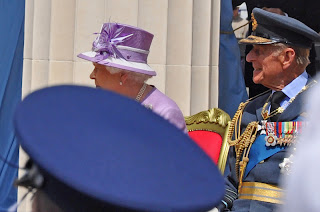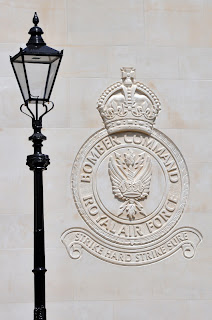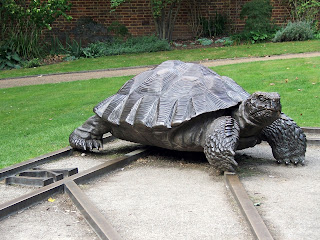My last post was about the forthcoming dedication of the Bomber Command Memorial. Well, now it has happened. After a wait of almost 70 years, the families and comrades of the airmen lost during the bombing campaigns of the Second World War now have a permanent, national, reminder of the bravery and the sacrifce made by these men. The survivors are now old men, in their late eighties and nineties. The Bomber Command Association have estimated that they are losing, on average, twelve former crewmen a week. It is very sad that so many have passed away over the years without seeing a fitting memorial to all of their lost friends and colleagues.
The casualty rate was staggering. Out of a total of 125,00 aircrew, 55,573 were killed, 8,403 were wounded and 9,838 were made prisoners of war. These men were all volunteers and had an average age of just 22. Volunteers also came from Commonwealth countries and from occupied Europe. Many of the young men put in charge of a 30 ton, four engined monster of a bomber had probably never even driven a car before signing up. Yet despite supporting these crews and encouraging the principle of area bombing during the war, many of those in authority chose to protect their own futures as the war moved towards an end, and distance themselves from the destruction and large scale loss of life that resulted from those raids.
In September 1941, Winston Churchill said "The fighters are our salvation but the bombers alone provide the means of victory". In his Victory Speech in 1945 he made no mention at all of Bomber Command and it's contribution to the war. No campaign medal was issued and although the bomber war was not written out of the history books, the men who took part in it were, to all intents and purposes, quietly forgotten.
All of that is now in the past and due to the tireless campaigning of the Bomber Command Assocoiation, the support of the remaining veterans and the fund raising power of the Heritage Foundation, the Memorial has been completed. On Thursday, in the presence of several thousand veterans, widows, family members and representatives of the nations whose young men volunteered to fight the common foe, the Memorial was dedicated and the sculpture of a seven man bomber crew was unveiled by Her Majesty the Queen. It was a dignified and fitting ceremony the highlight of which, for many of the old airmen, was the Lancaster of the Battle of Britain Memorial Flight showering Green Park wth poppies. It was a privelege for me to accompany my Dad to this long awaited event
I must give a very big thank you to the organisers of the event and especially to the cadets and the serving airmen and women who not only acted as ushers but who took the time to sit and chat with the veterans. They also spent a great deal of time handing out bottles of water, which was a lifesaver on what was an extremely hot day. A mention also for the St John's Ambulance crews who assisted those who found the heat just a little too much.
I apologise for the photographs accompanying this post. I had intended to cover the event quite extensively but on the day found that I could only do that by standing up and moving around. This would have resulted in me obscuring the view for others and as most of those others had more right to be there than me, I decided to content myself with grabbing the odd, sometimes partially obscured, shot here and there.
Others have covered it far better than me. Here































